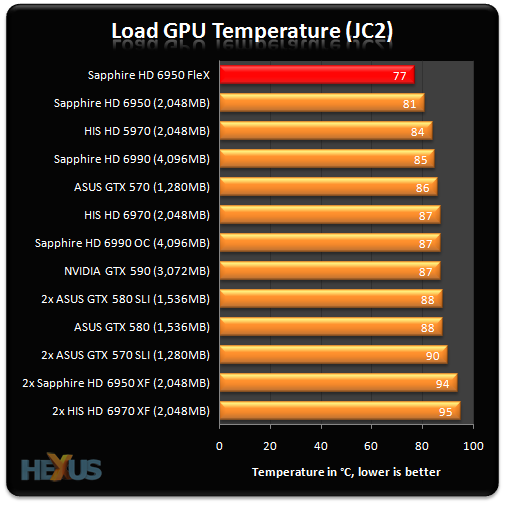Power, noise, heat and overclocking
But the Sapphire FleX card also purports to have a better cooler than the reference model, so here are a few numbers relating to in-game power-draw (Just Cause 2), temperature, and noise. And because they're directly comparable to any other high-end card we've tested in the last three months, we've added in 13 GPUs as comparisons.
Under-load power

This is interesting. The FleX card is connected up to just a single display, to make it a fair comparison against the rest. We plugged in a reference HD 6950 right after this test, to ensure that previous results were correct. The 60W differential is hard to explain given that both HD 6950s operate at the same speeds. What's more, flicking over the BIOS provides identical results.
Contacting Sapphire regarding this issue, its technical department reckons that our press-sample card has higher-than-normal voltage - AMD qualifies GPUs with a wide range of voltages; they simply need to work at the stated speeds - insofar as power-draw is supposed to be in far closer proximity to an HD 6950's rather than an HD 6970 card.

But even the increased power-draw can't take away from the excellent Vapor-X cooling.

Practically silent under load, the HD 6950 FleX is one of the better all-round cards.
Overclocking
For those with a penchant of running components past their rated speeds, which seems apt as this card is outfitted with a better-than-reference cooler, we pushed our sample from 800MHz/5,000MHz to 910MHz engine and 5,700MHz memory. The extra boost, which translates to an average in-game increase of 10.3 per cent across our five titles, is particularly useful when running three-screen gaming.









